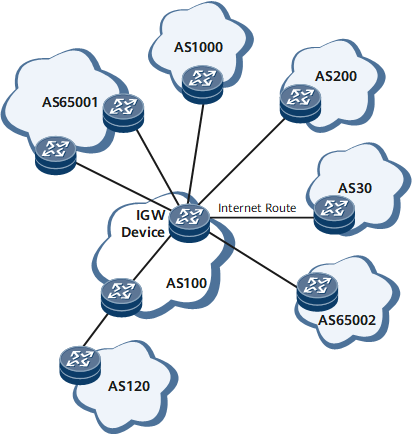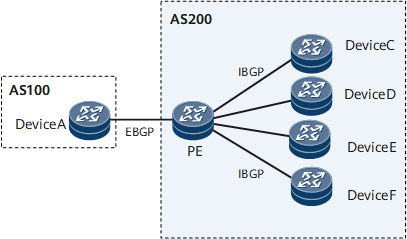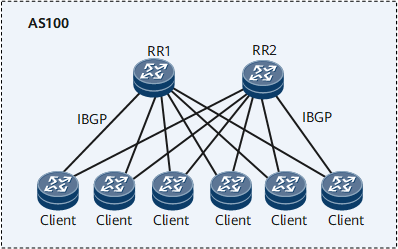BGP Dynamic Update Peer-Group
As the routing table increases in size and the network topology increases in complexity, BGP needs to be able to support more peers. When the router needs to send a large number of routes to many BGP peers and most of the peers share the same configuration, if the router groups each route and then send the route to each peer, the efficiency is low.
To improve the efficiency of route advertisement, BGP uses the dynamic update peer-group mechanism. The BGP peers with the same configurations are placed in an update peer-group. These routes are grouped once and then sent to all peers in the update peer-group, improving the grouping efficiency exponentially.
Without this feature, a route to be sent has to be grouped separately for each peer. With this feature, routes are grouped uniformly and then sent separately. Each route to be sent is grouped only once and then sent to all peers in the update peer-group, which improves the grouping efficiency and forwarding performance exponentially. When a large number of peers and routes exist, BGP dynamic update peer-groups greatly improve the BGP route grouping and forwarding performance.
Usage Scenario
The BGP dynamic update peer-groups feature is applicable to the following scenarios:
Scenario with an international gateway
Scenario with an RR
Scenario where routes received from EBGP peers need to be sent to all IBGP peers


The preceding scenarios have in common that the router needs to send routes to a large number of BGP peers, most of which share the same configuration. This situation is most evident in the networking shown in Figure 2. In addition, when there are a large number of peers and routes, the packet sending efficiency is a performance bottleneck.
The update peer-group feature can overcome this bottleneck. After the feature is applied, each routing update is grouped only once, and the generated Update message is sent to all peers in the group. For example, an RR has 100 clients and needs to reflect 100,000 routes to them. If the RR groups routing updates per peer, it needs to group 100,000 routing updates 100 times (a total of 10 million) before sending Update messages to the 100 clients. The update peer-group feature improves efficiency 100-fold, because the 100,000 routing updates need to be grouped only once.
